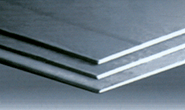Steel Products Prices North America

Comparison Price Indices: Sideways with Slight Upward Bias
Written by John Packard
August 17, 2014
Spreads between the indexes are beginning to narrow as the market has been trending sideways (with a slight upward bias) for a number of weeks. Benchmark hot rolled numbers were up $2 per ton due to SteelBenchmarker reporting new numbers this past week (SteelBenchmarker only reports prices twice per month). The average of all the indices followed by Steel Market Update is $678 per ton ($33.90/cwt).
The cold rolled average increased by $3 per ton based on the $7 per ton move by CRU and $2 per ton by SteelBenchmarker.
Galvanized was up an average of $5 per ton due to the $10 per ton movement by SMU. Galvalume remained steady for the week.
Plate prices dropped an average of $7 per ton as both CRU and SteelBenchmarker lowered their plate indices.
FOB Points for each index:
SMU: Domestic Mill, East of the Rockies.
CRU: Midwest Mill, East of the Rockies.
SteelBenchmarker: Domestic Mill, East of the Mississippi.
Platts: Northern Indiana Domestic Mill.

John Packard
Read more from John PackardLatest in Steel Products Prices North America

SMU Price Ranges: HR crawls back to $800/ton
SMU’s HR price stands at $800/st on average, up $5/st from last week. The modest gain came as the low end of our range firmed, and despite the high end of our range declining slightly.

SMU successfully completes IOSCO review
SMU has successfully completed an external review of all our prices. The review has concluded that they algin with principles set by the International Organization of Securities Commissions (IOSCO).

Domestic plate prices could heat up despite so-so demand, market sources say
Some sources also speculated that plate could see further price increases thanks to modest but steady demand, lower imports, mill maintenance outages, and end markets less immediately affected by tariff-related disruptions.

SMU Price Ranges: HR holds, galv slips amid competing market narratives
SMU’s sheet and plate prices see-sawed this week as hot-rolled (HR) coil prices held their ground while prices for galvanized product slipped.

Nucor carries $875/ton HR list price into week seven
Nucor is keeping hot-rolled (HR) coil prices unchanged again this week, according to its latest consumer spot price (CSP) notice issued on Monday, Oct. 6

